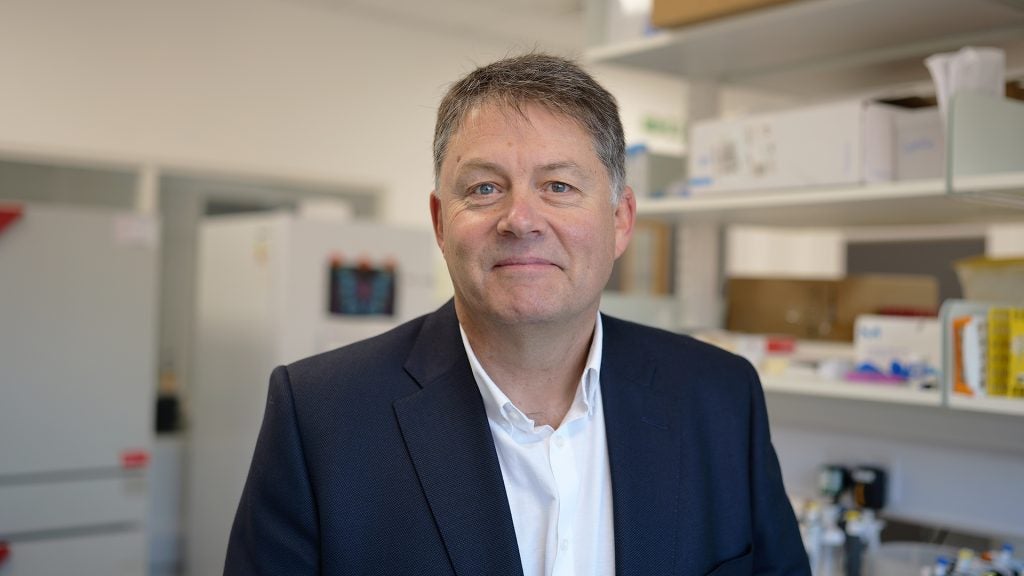
Psychedelics have a long and rich history in human culture, with archaeologists estimating that humans first started consuming psychoactive mushrooms more than 16,500 years ago. While their roots in culture and medicine are ancient, the pharmaceutical industry is looking to put a modern twist on these molecules to harness their therapeutic potential.
The most common area of development for psychedelics is mental health, which has seen a broad range of therapies enter clinical trials across indications like post-traumatic stress disorder (PTSD), depression and anxiety. This area has also caught the attention of big pharma, as AbbVie recently hedged its bets on Giglamesh Pharmaceuticals’ psychedelic medicine bretisilocin, forking out $1.2bn for the rights to the biotech’s lead depression asset.

Discover B2B Marketing That Performs
Combine business intelligence and editorial excellence to reach engaged professionals across 36 leading media platforms.
Meanwhile, Johnson & Johnson commercialised the first psychedelic-adjacent drug, Spravato (esketamine) for treatment-resistant depression (TRD) in January 2025, highlighting the agency’s increasing openness to the therapeutic class.
While psychedelics have shown promise across a diverse range of mental health conditions, research is increasingly highlighting the role of this drug class in neurological and inflammatory conditions, experts tell Pharmaceutical Technology.
Drug binding shows potential in anti-inflammatory indications
Though the full mechanism behind the psychedelic drug class’ impact on cellular processes remains unknown, it is well established that these therapies bind to the 5-HT2A serotonin receptor. While these receptors are commonly found in the brain, they also appear on immune cells.
This led Nicholas Barnes, CEO and founder of University of Birmingham spinout Celentyx, to question if psychedelic medicines could be used to treat immune cell-driven inflammatory disorders such as asthma, while not causing a psychedelic response.

US Tariffs are shifting - will you react or anticipate?
Don’t let policy changes catch you off guard. Stay proactive with real-time data and expert analysis.
By GlobalData“There’s growing evidence to suggest that, due to the difference in biochemical pathways associated with the hallucinogenic and anti-inflammatory responses triggered by psychedelics, we can develop molecules that exhibit the favourable impacts on inflammation without causing a psychedelic response,” Barnes states.
Barnes also sees potential for these drugs, which he calls PIPIs (psychedelic-drug informed but psychedelic-experience inactive) in psychiatric and neurological disorders known to involve neuroinflammation. “There is likely a subgroup of patients with depression and schizophrenia whose disease is driven by an inflammatory mechanism who may benefit from PIPI drugs,” he says.
According to Barnes, if these medications were to make it to market, they may be “particularly useful for those with drug-resistant disease”.

Molecules are similar to approved neurological drugs
Alongside their emerging role in inflammatory disease, psychedelics have been touted as potential therapies for neurological conditions, notes Emmanuelle Schindler, assistant professor of neurology at the Yale School of Medicine.
“When you look at molecules like psilocybin, lysergic acid diethylamide (LSD) or dimethyltryptamine (DMT), they are all almost identical to approved headache medications in terms of their chemical structure and pharmacological profile,” Schindler states.
These similarities prompted Schindler to explore the role of psilocybin in headache disorders, which she states is “not a new area of focus” for the drug class. “Patients have been taking low doses of psychedelics to manage cluster headaches since the 1990s, after their efficacy was discovered by accident,” Schindler adds.
Ever since, Schindler notes that patients have been “doing a lot of citizen science to determine best doses and regimens” – information which she later used to conduct pilot studies on psilocybin in both cluster headache and migraine.
Though these small trials have shown some promising preliminary signals, Schindler cautions that “no grand conclusions” can be made from them, as large, multi-centre studies are required to confirm their efficacy in headache disorders.
Schindler also stresses that the industry will have to further unpick “the most appropriate dosing and treatment protocol” for headache disorders, which she believes will look very different to those used to treat mental health conditions.
Meanwhile, Chris Witowski, CEO and co-founder of Florida-based biotech Psilera, noted that psychedelics have shown promise in neurodegenerative diseases like Parkinson’s and dementia.
“A small academic study using psilocybin in Parkinson’s saw the drug help with psychiatric symptoms, but also demonstrated an improvement in motor function, which emphasises the potential promise of such molecules in neurological disorders,” he says.

‘No trip’ psychedelics as the new frontier
While psychedelics have long been revered for their capacity to cause a ‘trip’, this trait is often unfavourable in a clinical setting, notes Schindler: “The hallucinogenic impact of psychedelics presents a challenge for both patients and clinicians, as these drugs have to be administered in a controlled environment,” she says.
However, in the case of headache disorders, Schindler notes that psychedelic drugs are often efficacious at doses that do not provoke a hallucinogenic response. This means that, in these disease types, psychedelics could be prescribed with reduced concerns around monitoring.
Meanwhile, Chris Witowski, CEO and co-founder of psychedelic-focused biotech Psilera, adds that non-hallucinogenic psychedelic analogues would fall better into gold standard, double-blind, placebo-controlled trials, as “issues with functional unblinding are removed from the equation”. In Witowski’s eyes, this could make the development and commercialisation of such drugs more straightforward.
This type of psychedelic is already being explored in the clinic, as Delix Therapeutics is currently looking to begin a Phase II trial on its lead psychedelic asset, DLX-001, which recently got US Food and Drug Administration (FDA) approval for self-administration at-home.
Though Witowski believes that non-hallucinogenic psychedelics will eventually become best-in-class, he foresees “multiple approvals in the near-term” for first-generation iterations across various mental health indications.
This could soon come true for Compass Therapeutics’ proprietary psilocybin formulation, COMP360, which met its primary endpoint in a Phase III study in TRD, with the readout from a second trial set to debut in H2 2026.
Atai Life Sciences’ mebufotenin benzoate nasal spray could also be a contender for first psychedelic therapy approved, as it was recently awarded breakthrough therapy designation by the FDA. It is due to enter Phase III trials in H1 2026.

Overcoming hurdles to get psychedelics to market
Despite the observed potential of psychedelics across the pharmaceutical sector, there are some issues that must be addressed before this drug class can make it to market.
Albert Garcia Romeu, associate director of the Johns Hopkins Center for psychedelic and consciousness research, notes that the stigma and taboo attached to psychedelics could complicate the path to market: “It’s currently unclear how ready patients are to use them, and how doctors feel about prescribing them,” he comments.
Garcia Romeu also has concerns around the healthcare infrastructure needed for the wide-scale uptake of ‘trip-inducing’ drugs due to “the requirement of psychotherapy or counselling, or at a minimum, supervised drug administration”. He says that there is currently insufficient infrastructure for this kind of dosing regimen which makes it difficult to predict what the drug class’s uptake will look like.
Garcia Romeu also raised concerns about the global regulatory understanding on psychedelics. “Agencies are not typically keyed into how to effectively evaluate psychedelics – especially when applied alongside psychotherapies,” he remarks.
Despite the US Food and Drug Administration’s (FDA) limited experience in psychedelic regulation, Witowski believes that the agency does see promise in the class. “Certain psychedelic therapies have been granted breakthrough therapy potential, so I think there is a very clear road map to follow to get these drugs approved,” Witowski concludes.





